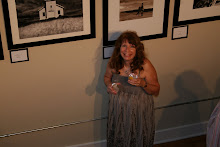The Society of Martins Hundred received their charter from the parent company the London Company in 1618. The Martins Hundred was composed of 20,000 acres on the east end of James City County on the east side of Skiffes (Keith’s) Creek which was about 6.7 miles south east of Williamburg. It was named after Richard Martin, Esq, an attorney for the London Company and a lead member of the Society. This Richard Martin may have been the Goldsmith to Queen Elizabeth, Lord Mayor of London and Master of the Mint. The Society may have named the Plantation after Richard Martin to attract other wealthy investors.
Around 1618, The Society sent the ship The Gift of God to Virginia with about 220 settlers for the plantation. They arrived in between January and March of 1619.
On Friday, March 22, 1622, the Powhatan Indian Confederation led by Opechancanough attacked the surrounding Jamestown villages. The Martins Hundred which now consisted of about 140 individuals was attacked resulting in 78 deaths and the abandonment of Martins Hundred.
After the shock of the attack wore off settlers began to return to the plantations. Robert Adams along with others was convinced to move to Martins Hundred to help the settlers. At the time Robert Adams was a planter living in James City and was a burgess for James Island in 1623. The Superintendant of Martins Hundred was William Harwood. Harwood allotted Addams, his wife and a servant the house that belonged to Richard Staples. Richard Staples had been killed in the 1622 massacre. The Adamses stayed and rebuilt the house and began planting the fields.
During this time, Indians attacked again. This time a woman servant was killed and Robert Adams received a wound in the leg. Although wounded, Robert Adams and a servant used shott and powder to stop the attack. Unfortunately half of the crop was destroyed. The Indians and the settlers were using the tactic to burn and destroy each others crops in the hopes of starving each other out. While this attack was occurring, Robert’s wife went to Harwood’s settlement asking for help. Not only did Harwood not help, but he would not even open the door to his storehouse for Ms. Adams. She was forced to take refuge in the Watch house until it was safe.
William Harwood was a terrible superintendent. Harwood refused the tenants powder and shott and supplies from fresh shipments. Instead he sold the supplies to other plantations at an inflated price and demanded half of the Martins hundred settlers’ crops for rent. Neither did he provide tools, clothing or a loan of cattle which had been promised by the Adventurers. The settlers had to buy these supplies which put them further in debt.
Adams left the settlement, but was convinced to come back by Ellis Emmerson who was one of the settlers in Martins Hundred. Ellis Emmerson had brought thirty settlers to Martins Hundred in the Christmas of 1622. At the time that Adams returned to the settlement, there were only 10 people left that Ellis Emmerson had brought to Virginia. Safety and a growing concern could not flourish in that atmosphere, if no one lived there and Ellis Emmerson needed people to return. When Robert Adams returned he built another house with palisades for protections.
On June 15, 1625, Robert Adams wrote the Society requesting supplies and assistance at Martins Hundred. In this letter he described some of the conditions, but he never complained about the work that was involved. Instead he said, “I ame willing here to continue if it please you and the other adventurers to asure me a reasonabell terme in the house and ground I now enjoy and lybertye to cleare more into the wood which lyeth unfit for any habytatyon or a share of land for a resonabell adventure or otherwise to have resaonabell satysfactyon for that I have built.”
References:
Motives of Honor, Pleasure and Profit Plantation Management-Lorena Seebach Walsh
Ancestry.com
Magazine of Virginia Genealogy, Vol. 35, No. 3 page 188
MS, 1491 document 572 reel 3. Ferrar Papers
The Cradle of the Republic Jamestown and James River –Lyon Gardiner Tyler
A Guidebook to Virginia Historical Markers-John S. Salmon, Margaret T. Peters, Va Dept of Historic Resources
The New England Historical and Genealogical Register Volume 31-Henry Fitzgilbert Waters and New England Historical Genealogical Society
Virginia Immigrants and Adventurers – Martha W. McCartney
Adventurers of Purse and Person Virginia 1607-1624/5
compiled and edited by John Frederick Dorman, C.G.,F.A.S.G.
Colonial Williamsburg Archaeology website











No comments:
Post a Comment